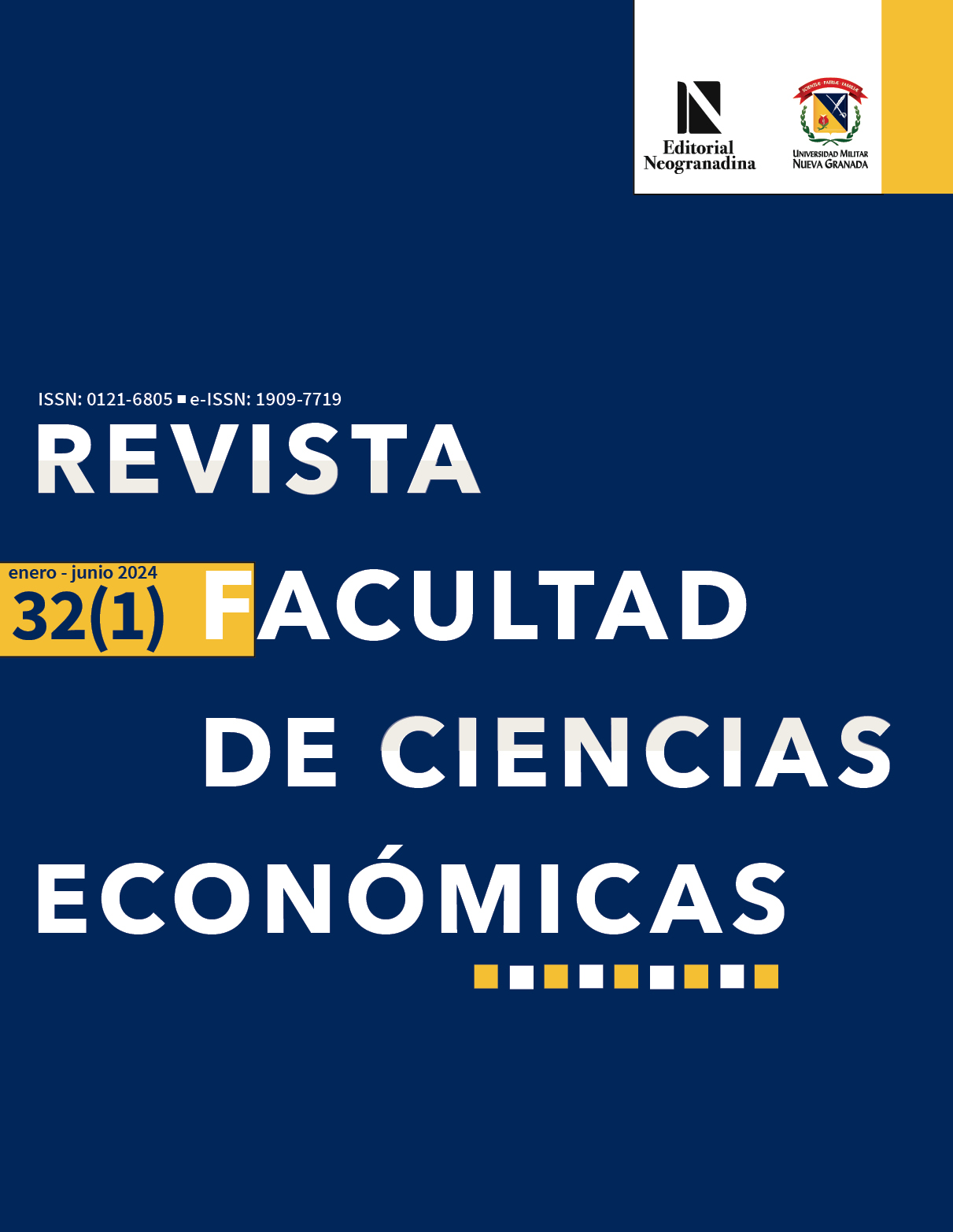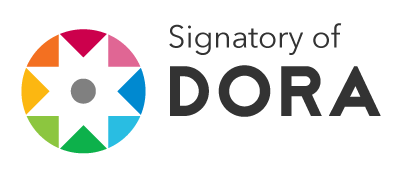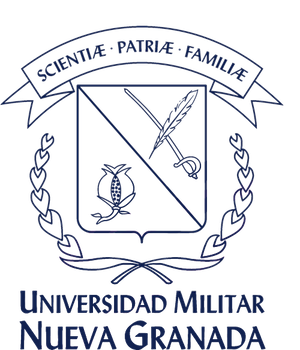Dinâmicas e comportamentos das empresas inovadoras do setor manufatureiro colombiano
Resumo
A inovação tornou-se uma estratégia organizacional que contribui para a conquista de objetivos como a sobrevivência e o crescimento. A literatura identificou que as organizações adotam suas próprias formas de inovação, desenvolvendo diferentes comportamentos e atitudes em relação à inovação que são determinantes nos resultados que obtêm. No entanto, em países emergentes como a Colômbia, é necessária maior evidência empírica sobre as diferenças que existem entre orientações estratégicas com um enfoque interno e externo. Portanto, o objetivo deste artigo é identificar as diferenças nas características e comportamentos de inovação determinantes para os resultados de inovação das empresas manufatureiras colombianas. Para tal fim, utilizou-se informação de fonte secundária obtida a partir da Pesquisa de Desenvolvimento e Inovação Tecnológica (EDIT), e adotou-se uma metodologia quantitativa, utilizando as técnicas de cluster hierárquico e tabelas de contingência, o que permitiu identificar três grupos de empresas no setor manufatureiro colombiano: empresas com alto nível de atividades em ciência, tecnologia e inovação, que obtêm os melhores resultados de inovação; empresas que alcançam altos resultados de inovação por meio da imitação; e empresas que não realizam atividades de ciência, tecnologia e inovação. Esta pesquisa contribui para o desenvolvimento da teoria sobre orientação estratégica à inovação, especialmente no setor manufatureiro, que se caracteriza por ser um dos mais inovadores segundo seus registros de propriedade intelectual. Além disso, a pesquisa apresenta contribuições práticas para os tomadores de decisão nas organizações, uma vez que descreve os comportamentos associados a um grupo de empresas que obtêm os melhores resultados de inovação.
Downloads
Referências
Abidin, J. O. Z. (2014). An Empirical Investigation into the Significance of Intellectual Capital and Strategic Orientations on Innovation Capability and Firm Performance in Malaysian Information and Communications Technology (ict) Small-to-Medium Enterprises (SMEs). March, 233.
Adam, J. K., Indradewa, R., Yanuar, T., y Syah, R. (2020). The Leadership Styles Impact, In Learning Organizations, And Organizational Innovation Towards Organizational Performance Over Manufacturing Companies, Indonesia. Journal of Multidisciplinary Academic 63 JoMA, 04(02), 63-69.
Akbariyeh, H., y Seddigh, A. (2017). The influence of strategic orientation on new product development: mediating role innovation, knowledge management and organisational capabilities: an empirical investigation. International Journal of Business Innovation and Research, 13(4), 502-518. https://doi.org/10.1504/IJBIR.2017.085104
Alegre, J., Lapiedra, R., y Chiva, R. (2006). A measurement scale for product innovation performance. European Journal of Innovation Management, 9(4), 333-346. https://doi.org/10.1108/14601060610707812
Anam, C., y Churiyah, M. (2023). 7S-McKinsey Based Organizational Performance Model on MSMEs. ManajemenKewirausahaan jmk, 8(2), 112-120. https://doi.org/10.32503/jmk.v8i2.3458
Arango-Alzate, B., Zartha-Sossa, J. W., Medina-Henao, J. G., Ávalos-Patiño, A. F., y Vélez-Salazar, F. M. (2015). Barriers for innovation detected in 400 colombian businesses, based on the innovation “U” coefficient methodology. Revista Facultad de Ingeniería, 2015(77), 9-16. https://doi.org/10.17533/udea.redin.n77a02
Augusto, M. G., Lisboa, J. V. y Yasin, M. M. (2014). The mediating role of innovation on strategic orientation and performance. International Journal of Business Innovation and Research, 8(3), 282-299. https://doi.org/10.1504/IJBIR.2014.060828
Bang Nguyen Dilip S. Mutum. (2015). Characteristics of innovation orientations in construction companies. The Eletronic Library, 34(1), 1-5. https://doi.org/10.1108/JEDT-06-2016-0037
Barradas, M. del R., Rodríguez, J. y Maya, I. (2021). Desempeño organizacional. Una revisión teórica de sus dimensiones y forma de medición. RECAI, Revista de Estudios en Contaduría, Administración e Informática, 28, 21-40.
Beltrán-Morales, Luis Felipe, Almendarez-Hernández, Marco Antonio y Jefferson, David J. (2018). El efecto de la innovación en el desarrollo y crecimiento de México: una aproximación usando las patentes. Problemas del desarrollo, 49(195), 55-76. https://doi.org/10.22201/iiec.20078951e.2018.195.63191
Branstetter, L. G. y Laverde-Cubillos, N. R. (2024). The dark side of the boom: Dutch disease, competition with China, and technological upgrading in Colombian manufacturing. Journal of International Economics, 148. https://doi.org/10.1016/j.jinteco.2023.103818
Chandler, A. D. (1962). Strategy and structure: Chapters in the History of American Enterprise. MIT Press, Boston.
Chen, Y. y Lin, Z. (2021). Business intelligence capabilities and firm performance: A study in China. International Journal of Information Management, 57, 1-15. https://doi.org/10.1016/j.ijinfomgt.2020.102232
Choi, J., Kim, B., Han, C. H., Hahn, H., Park, H., Yoo, J. y Jeong, M. K. (2021). Methodology for assessing the contribution of knowledge services during the new product development process to business performance. Expert Systems with Applications, 167(113860). https://doi.org/https://doi.org/10.1016/j.eswa.2020.113860
Córdoba, J. M. y Naranjo, J. C. (2017). Incidencia de la inversión en innovación en las ventas de productos innovadores. Evidencia empírica en empresas manufactureras de Colombia. Información Tecnológica, 28(2), 153-166. https://doi.org/10.4067/S0718-07642017000200017
Damapanpour, F.; Sabat, K. A. y Evan, M. (1989). The relationship between types of innovation and organizational performance fariborz damanpour. Journal of Management Studies, 26(6), 587-601.
Dana, L. P.; Salamzadeh, A.; Mortazavi, S. y Hadizadeh, M. (2022). Investigating the Impact of International Markets and New Digital Technologies on Business Innovation in Emerging Markets. Sustainability (Switzerland), 14(2). https://doi.org/10.3390/su14020983
DANE. (2017). Metodología General Encuesta de Desarrollo e Innovación Tecnológica en la Industria Manufacturera, edits (p. 26). Departamento Administrativo Nacional de Estadística.
Del Rosario Demuner-Flores, M.; Delgado-Cruz, A. y Vargas-Martínez, E. E. (2022). Innovation and performance: Relationship mediated by learning and market orientation in Mexican companies. Estudios Gerenciales, 38(162), 82-94. https://doi.org/10.18046/j.estger.2022.162.4706
Denicolai, S.; Zucchella, A. y Moretti, F. (2018a). Not so similar after all: Exploring the diversity of strategic orientations for innovation. International Journal of Innovation Management, 22(4), 1-33. https://doi.org/10.1142/S1363919618500366
Denicolai, S.; Zucchella, A. y Moretti, F. (2018b). Not So Similar After All: Exploring the Diversity of Strategic Orientations for Innovation. International Journal of Innovation Management, 22(4), 1850036. https://doi.org/10.1142/s1363919618500366
Do Hyung, L. y Dedahanov, A. (2014). Firm performance and entrepreneurial, market and technology orientations in korean technology intensive smes. Asian Social Science, 10(22), 37-47. https://doi.org/10.5539/ass.v10n22p37
Dobni, C. B. (2010). The relationship between an innovation orientation and competitive strategy. International Journal of Innovation Management, 14(2), 331-357. https://doi.org/10.1142/S1363919610002660
Drucker, P. F. (1995). Innovation and entrepreneurship. Butterworth Heinemann, Waltham, MA.
Espinosa, J. M. M.; Miranda, J.; Cortés, D.; Medina, J. y Molina, A. (2019). 3D virtual environments to support new product development: A mobile platform based on an open innovation laboratory applied in higher education. In International Conference on Smart Multimedia, 483-496. https://doi.org/10.1007/978-3-030-54407-2_41
Ferreira, J. A. B.; Coelho, A. M. y Weersma, L. A. (2019). The mediating effect of strategic orientation, innovation capabilities and managerial capabilities among exploration and exploitation, competitive advantage and firm’s performance. Contaduría y Administración, 64(1), 1-28. https://doi.org/10.22201/fca.24488410e.2019.1918
Forina, M.; Armanino, C. y Raggio, V. (2002). Clustering with dendrograms on interpretation variables. Analytica Chimica Acta, 454(1), 13-19. https://doi.org/10.1016/S0003-2670(01)01517-3
Gatignon, H. y Xuereb, J.-M. (1997). Strategic Orientation of the Firm and New Product Performance. Journal of Marketing Research, 34(1), 77-90. https://doi.org/10.2307/3152066
Gopalakishnan, S. (2000). Links dimension performance.pdf. The Journal of High Technology Management Research, 11(1), 137-153.
Gotteland, D.; Shock, J. y Sarin, S. (2020a). Strategic orientations, marketing proactivity and firm market performance. Industrial Marketing Management, 91(October 2016), 610-620. https://doi.org/10.1016/j.indmarman.2020.03.012
Gotteland, D., Shock, J., y Sarin, S. (2020b). Strategic orientations, marketing proactivity and firm market performance. Industrial Marketing Management, March, 1-11. https://doi.org/10.1016/j.indmarman.2020.03.012
Grawe, S. J.; Chen, H. y Daugherty, P. J. (2009). The relationship between strategic orientation, service innovation, and performance. International Journal of Physical Distribution y Logistics Managemen, 39(4), 282-300. https://doi.org/10.1108/09600030910962249
Grinstein, A. (2008). The relationships between market orientation and alternative strategic orientations: A meta-analysis. European Journal of Marketing, 42(1-2), 115-134. https://doi.org/10.1108/03090560810840934
Hagen, B.; Zucchella, A.; Cerchiello, P. y De Giovanni, N. (2012). International strategy and performance-Clustering strategic types of SMEs. International Business Review, 21, 369-382. https://doi.org/10.1016/j.ibusrev.2011.04.002
Hair Jr. J.; Black, W.; Babin, B. y Anderson, R. (2010). Multivariate Data Analysis. Pearson Prentice Hall.
Handoyo, S.; Mulyani, S.; Ghani, E. K. y Soedarsono, S. (2023). Firm Characteristics, Business Environment, Strategic Orientation, and Performance. Administrative Sciences, 13(3), 74. https://doi.org/10.3390/admsci13030074
Hervas-Oliver, J. L.; Parrilli, M. D. y Sempere-Ripoll, F. (2021a). sme modes of innovation in European catching-up countries: The impact of sti and dui drivers on technological innovation. Technological Forecasting and Social Change, 173. https://doi.org/10.1016/j.techfore.2021.121167
Hervás-Oliver, J. L.; Parrilli, M. D.; Rodríguez-Pose, A. y Sempere-Ripoll, F. (2021b). The drivers of sme innovation in the regions of the EU. Research Policy, 50(9). https://doi.org/10.1016/j.respol.2021.104316
Hervás-Oliver, J. L.; Sempere-Ripoll, F.; Boronat-Moll, C. y Rojas, R. (2015). Technological innovation without Ry D: unfolding the extra gains of management innovations on technological performance. Technology Analysis and Strategic Management, 27(1), 19-38. https://doi.org/10.1080/09537325.2014.944147
Idris, M. C. y Durmuşoğlu, A. (2021). Innovation management systems and standards: A systematic literature review and guidance for future research. Sustainability (Switzerland), 13(15). https://doi.org/10.3390/su13158151
Jenatabadi, H. S. (2015). An Overview of Organizational Performance Index: Definitions and Measurements. SSRN Electronic Journal, May. https://doi.org/10.2139/ssrn.2599439
Julieth, K.; Fernanda, M.; Julieth Padilla-Naranjo, K. y Santo Tomás, U. (2021). Relación entre innovación y cooperación en las empresas del sector de calzado en Bucaramanga, Santander. Periodicidad: Semestral,
(1), 2021.
Kaiser, H. F. (1974). An index of factorial simplicity. Psychometrika, 39(1), 31-36. https://doi.org/10.1007/BF02291575
Lee, D. H.; Dedahanov, A. T. y Rhee, J. (2015). Moderating role of external networks and mediating effect of innovation performance on the relationship between technology orientation and firm performance. Asian Journal of Technology Innovation, 23(3), 321-334. https://doi.org/10.1080/19761597.2015.1120498
Lu, X. y Wang, J. (2024). Is innovation strategy a catalyst to solve social problems? The impact of Ry D and non-Ry D innovation strategies on the performance of social innovation-oriented firms. Technological Forecasting and Social Change, 199. https://doi.org/10.1016/j.techfore.2023.123020
Lucio-Arias, D.; Sánchez, E.; Mora, H. y Villarreal, N. F. (2013). Estudio comparativo de los resultados de las Encuestas de Desarrollo e Innovación Tecnológica (edit) en la industria manufacturera de Colombia desde una perspectiva sectorial. Observando El Sistema Colombiano de Ciencia, Tecnología e Innovación: Sus Actores y Sus Productos, January 2013, 195-224.
Maclean, M.; Appiah, M. K. y Addo, J. F. (2023). Implications of strategic orientation on firms’ performance in a lower middle-income country: Does organizational innovation capability matter? Cogent Business and Management, 10(2). https://doi.org/10.1080/23311975.2023.2211366
Matsuno, K. y Mentzer, J. T. (2000). The effects of strategy type on the market orientation-performance relationship. Journal of Marketing, 64(4), 1-16. https://doi.org/10.1509/jmkg.64.4.1.18078
Medina, C. y Rufín, R. (2009). The mediating effect of innovation in the relationship between retailers’ strategic orientations and performance. International Journal of Retail y Distribution Management, 37(7), 629-655. https://doi.org/10.1108/09590550910964639
Méndez Morales, A. y Cuéllar, S. (2021). El patentamiento en Colombia. Una mirada a las dinámicas de invención entre 1950 y 2015. En: Proceso de Industrialización en Colombia, desempeño y condiciones institucionales. Universidad Externado de Colombia.
Moilanen, M.; Østbye, S., y Woll, K. (2014). Non-Ry D SMEs: External knowledge, absorptive capacity and product innovation. Small Business Economics, 43(2), 447-462. https://doi.org/10.1007/s11187-014-9545-9
Mora, H.; Romero, E.; Castellanos, J. y Fuentes, D. (2022). Informe de Indicadores de Ciencia, Tecnología e Innovación Colombia 2021. Observatorio Colombiano de Ciencia y Tecnología.
Morales, M. E. y Riaga, C. O. (n. d.). Factores determinantes de los procesos de innovación: una mirada a la situación en Latinoamérica situation.
Mu, J. y Di Benedetto, C. A. (2011). Strategic orientations and new product commercialization: mediator, moderator, and interplay. Ry D Management, 41(4), 337-359. https://doi.org/10.1111/j.1467-9310.2011.00650.x
Mutlu, H. M. y Sürer, A. (2016). Effects of market, e-marketing, and technology orientations on innovativeness and performance in Turkish health organizations. Health Marketing Quarterly, 33(2), 95-111. https://doi.org/10.1080/07359683.2016.1166807
Narver, J. C. y Slater, S. F. (1990). The Effect of a Market Orientation on Business Profitability. Journal of Marketing, 54(4), 20. https://doi.org/10.2307/1251757
Nicholson, N. (1990). Strategy, innovation and performance. 51, 546-551.
OECD. (2018). Guidelines for Collecting, Reporting and Using Data on Innovation (Oslo Manual). OECD Publishing.
O’Regan, N. y Ghobadian, A. (2005). Innovation in SMEs: The impact of strategic orientation and environmental perceptions. International Journal of Productivity and Performance Management, 54(2), 81-97. https://doi.org/10.1108/17410400510576595
Ortiz-Villajos, J. M. y Sotoca, S. (2018). Innovation and business survival: A long-term approach. Research Policy, 47(8), 1418-1436. https://doi.org/10.1016/j.respol.2018.04.019
Pardo Carrillo, O. S.; Navarro Jaimes, D. M. y Moreno Sierra, V. C. (2022). competitividad de las empresas manufactureras en Colombia (2008-2018). Revista Facultad de Ciencias Económicas, 30(2), 9-20. https://doi.org/10.18359/rfce.6181
Paredes, E. (2020). Dinámica de innovación de las empresas en Colombia 2020. Unaciencia, 20(4), 27.
Phung, T. M. T.; Tran, D. T.; Vermeulen, P. A. M. y Knoben, J. (2021). The effects of internal and external innovation strategies on process innovation in Vietnamese firms. Asia Pacific Journal of Innovation and Entrepreneurship, 15(1), 26-38. https://doi.org/10.1108/apjie-08-2020-0134
Polat, M.; Kara, K. y Yalcin, G. C. (2022). Clustering Countries on Logistics Performance and Carbon Dioxide (CO2) Emission Efficiency: An Empirical Analysis. Business and Economics Research Journal. https://doi.org/10.20409/berj.2022.370
Qu, Y. y Mardani, A. (2023). Market orientation, technological opportunity, and new product innovation performance. Journal of Business Research, 162. https://doi.org/10.1016/j.jbusres.2023.113841
Ramaswamy, K.; Thomas, A. S. y Litschert, R. J. (1994). Organizational performance in a regulated environment: The role of strategic orientation. Strategic Management Journal, 15(1), 63-74. https://doi.org/10.1002/smj.4250150105
Restrepo-Ramírez, C. G. (2023). Orientación estratégica a la innovación como motor de desarrollo del desempeño organizativo a través del fortalecimiento del capital intelectual: evidencia estructural basada en datos objetivos. Universidad de Valencia.
Rui, X.; Wang, Z.; Li, X. y Wang, X. (2023). Entrepreneurial orientation and innovation performance: the mediating effect of social network ambidexterity. Technology Analysis and Strategic Management. https://doi.org/10.1080/09537325.2023.2172567
Salavou, H.; Baltas, G. y Lioukas, S. (2004). Organisational innovation in SMEs. European Journal of Marketing, 38(9/10), 1091-1112. https://doi.org/10.1108/03090560410548889
Saqib, M.; Baluch, N. H. y Udin, Z. M. (2017). Moderating role of technology orientation on the relationship between knowledge management and SMEs’ performance in Oman: A conceptual study. International Journal of Economic Perspectives, 11(1), 433-441.
Sarajoti, P.; Chatjuthamard, P.; Treepongkaruna, S. y Papangkorn, S. (2022). Perspective Chapter: Sustainability and Corporate Innovation. In Corporate Social Responsability in the 21st Century. www.intechopen.com
Schentler, P.; Lindner, F. y Gleich, R. (2010). Innovation performance measurement. Innovation and International Corporate Growth, 2008, 1-452. https://doi.org/10.1007/978-3-642-10823-5
Sharma, A.; Sousa, C. y Woodward, R. (2022). Determinants of innovation outcomes: The role of institutional quality. Technovation, 118. https://doi.org/10.1016/j.technovation.2022.102562
Siguaw, J. A. ; Simpson, P. M. y Enz, C. A. (2006). Conceptualizing innovation orientation: A framework for study and integration of innovation research. Journal of Product Innovation Management, 23(6), 556-574. https://doi.org/10.1111/j.1540-5885.2006.00224.x
Simpson, P. M.; Siguaw, J. A. y Enz, C. A. (2006). Innovation orientation outcomes: The good and the bad. Journal of Business Research, 59(10-11), 1133-1141. https://doi.org/10.1016/j.jbusres.2006.08.001
Siwi Agustina, T. y Ega Patria Arganata, M. (2023). Determining Factors in smes Innovation Performance: An Empirical Study in Indonesia. inobis, 6(02), 149-162.
Suhag, A. karim; Solangi, S. R.; Larik, R. S. A.; Lakho, M. K. y Tagar, A. H. (2017). the Relationship of Innovation With Organizational Performance. International Journal of Research -granthaalayah, 5(2), 292-306. https://doi.org/10.29121/granthaalayah.v5.i2.2017.1741
SwissContact, C. (2021). Obstáculos a la innovación en empresas de Colombia y oferta pública de instrumentos. In Consejo Privado de Competitividad y SwissContact y Fundación Suiza de Cooperación para el Desarrollo Técnico.
Taques, F. H.; López, M. G. ; Basso, L. F. y Areal, N. (2021). Indicators used to measure service innovation and manufacturing innovation. Journal of Innovation and Knowledge, 6(1), 11-26. https://doi.org/10.1016/j.jik.2019.12.001
Tidd, J. (20 C. E.). Innovation management in context: Environment, organization and performance. ieee Engineering Management Review, 45(2), 43-55. https://doi.org/10.1109/emr.2017.7968101
Tomé, R. A. ; Urgal, B. y Quintás, M. A. (2013). Propuesta de medida del desempeño innovador: Aplicación en las empresas innovadoras españolas. Cuadernos de Gestión, 13(1), 41-68. https://doi.org/10.5295/cdg.100267ra
Tutar, H. ; Nart, S. y Bingöl, D. (2015). The Effects of Strategic Orientations on Innovation Capabilities and Market Performance: The Case of ASEM. Procedia - Social and Behavioral Sciences, 207, 709-719. https://doi.org/10.1016/j.sbspro.2015.10.144
Ul Hadia, N.; Abdullah, N. y Sentosa, I. (2016). An Easy Approach to Exploratory Factor Analysis: Marketing Perspective. Journal of Educational and Social Research, 6(1), 215-223. https://doi.org/10.5901/jesr.2016.v6n1p215
Wright, P.; Kroll, M.; Pray, B. y Lado, A. (1995). Strategic orientations, competitive advantage, and business performance. Journal of Business Research, 33(2), 143-151. https://doi.org/10.1016/0148-2963(94)00064-L
Xu, J.; Shang, Y.; Yu, W. y Liu, F. (2019). Intellectual Capital, Technological Innovation and Firm Performance: Evidence from China’s Manufacturing Sector. Sustainability, 11(19), 5328. https://doi.org/10.3390/su11195328
Zhang, H. (2022). Non-Ry D innovation in SMEs: is there complementarity or substitutability between internal and external innovation sourcing strategies? Technology Analysis and Strategic Management. https://doi.org/10.1080/09537325.2022.2065979
Zhang, Y.; Khan, U.; Lee, S. y Salik, M. (2019). The Influence of Management Innovation and Technological Innovation on Organization Performance . A Mediating Role of Sustainability. https://doi.org/10.3390/su11020495
Zhou, K. Z. y Tse, D. K. (2005). 7 JM Zhou, Yim, Tse.pdf.Journal of Marketing, 69(April), 42-60.

Copyright (c) 2024 Revista Facultad de Ciencias Económicas

Este trabalho está licenciado sob uma licença Creative Commons Attribution-NonCommercial-NoDerivatives 4.0 International License.











